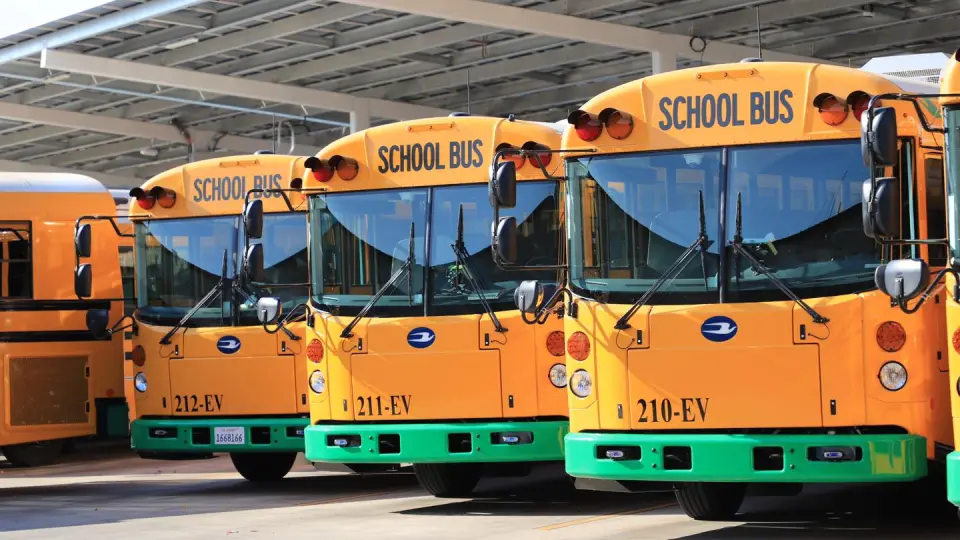EV Bus Fleets Have Arrived
Why the Shift?
As concerns about climate change and air pollution continue to grow, industries and organizations are pivoting from reliance on older technologies to cleaner, more sustainable options.
Here in Georgia, one way school systems and counties have been springing into action has been by addressing inefficiencies in their aging school bus fleets. While the electric (EV) bus itself is not entirely new – buses first emerged on the market 1994 – new funding sources and increasing climate concerns have pushed schools to reevaluate the importance of sustainable commutes for their students.

So, How Do Electric School Buses Work?
In a traditional bus, the motor works alongside an alternator in a combustion cycle that produces millions of pounds of carbon emissions a year, contributing to air pollution in our region. Conversely, an electric bus draws electricity from the power grid and stores it in a battery that can be recharged once the electricity has been used up.[1] This means zero emissions, and a much smaller carbon footprint over the lifespan of each bus.
And when equipped with bidirectional charging capabilities, these buses can store excess energy from renewable sources and discharge it back to the grid when needed, helping to stabilize the grid and support the integration of renewable energy.[2]
Cleaner Air = Health Equity for Students
The transition to electric school buses has domino effects on our environment, starting with reducing carbon emissions and continuing into the communities, schools, and eventually homes of each student.
Studies have shown that exposure to engine exhaust, especially in those long school-bus and idling carpool pick-up lanes, can contribute to respiratory problems such as asthma, bronchitis, and other respiratory infections

But the benefits go beyond the carpool line, addressing invisible health inequities experienced by children across the state, not just in urban areas.
In a 2018 data study by the Georgia Department of Health, asthma prevalence was significantly higher among children whose family annual household income was less than $25,000 than among children from families whose family income is more than $75,000. Concentrations of asthma prevalence are seen throughout the Atlanta Regional Commission’s 11-county region, ranging from Atlanta proper and stretching into suburban counties.
Doomed if Diesel? NO – Clean Air Still Means Taking Cars Off the Road!
Despite the overwhelming benefits, rollouts of electric school buses still face considerable challenges. Upfront costs are significantly higher for electric buses than their older, less efficient diesel counterparts, and competing line items in district and school budgets mean that the lower long-term cost of electric bus fleets can be overshadowed by their immediate expense.
While federal grants like the Clean School Bus Program help to address this barrier, it is still up to each parent and administration to choose transportation options that decrease CO2 and noxious particulate matter.
Simply put, for every student that rides the bus, they are taking a car, and its exhaust, off the road.

Want to celebrate riding the school bus? February is Love My Bus Month
Learn more about how teachers and schools can reward student riders and encourage new ones by checking out our Love My Bus Month page for events and offerings!
[1] Electric Bus Guide: How They Work https://www.gregorypoole.com/electric-bus-guide/#how-they-work
[2] Federal Energy Management Program https://www.energy.gov/femp/bidirectional-charging-and-electric-vehicles-mobile-storage


